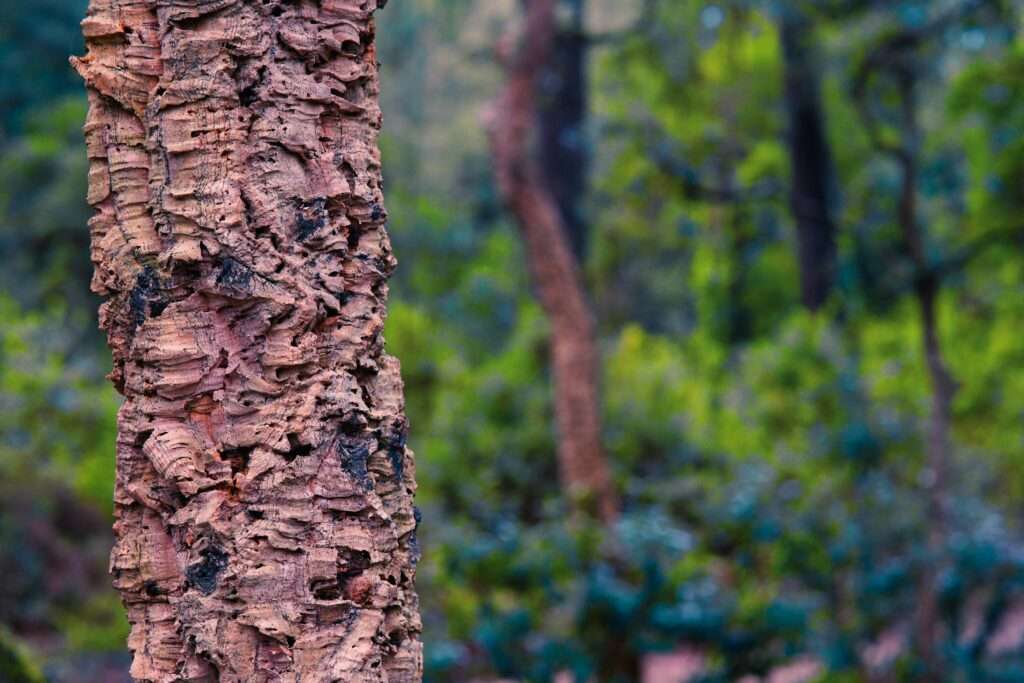By Gina
In a world increasingly conscious of environmental concerns, sustainable materials are gaining prominence. One such unsung hero in the realm of eco-friendly options is cork. Derived from the bark of the cork oak tree (Quercus suber), this remarkable material is not only versatile but also boasts a myriad of sustainable benefits that make it a frontrunner in conscious consumer choices.
A brief history of cork
The use of cork spans centuries, with a rich history that reflects its versatility and enduring popularity. The Egyptians used cork stoppers for amphorae containing precious oils and perfumes, showcasing cork’s early significance in preserving and protecting valuable commodities. The ancient Greeks and Romans recognized cork’s buoyancy and used it in fishing equipment, such as fishing nets and floats. In the Middle Ages Monasteries and churches utilised cork for insulation and as a sealing material for containers.
In the 20th century, cork’s applications diversified further. It became a popular choice for bulletin boards and wall coverings due to its sound-absorbing properties. The aerospace industry also began using cork in various components, taking advantage of its lightweight and insulating characteristics. Cork’s sustainability and eco-friendly profile gained prominence in the 21st century. As environmental awareness increased, cork’s renewable nature and ability to sequester carbon dioxide became key selling points.
Cork stands out as a renewable resource, harvested from cork oak trees without causing harm to the trees themselves. Unlike other materials that require the destruction of the plant, the bark of the cork oak tree regenerates, allowing for repeated harvests. This unique characteristic makes cork an exceptionally sustainable choice.
Additionally, cork is fully biodegradable. When the time comes to dispose of cork products, they break down naturally, returning to the environment without leaving behind harmful residues or contributing to pollution.
Carbon Sequestration and Reduced Carbon Footprint:
Cork oak trees play a crucial role in sequestering carbon dioxide from the atmosphere. The harvesting process, known as debarking, actually stimulates the tree to absorb more carbon dioxide as it regenerates its bark. This not only aids in mitigating climate change but also reduces the carbon footprint associated with cork production.
Compared to other materials, the carbon footprint of cork is notably lower. The production process requires less energy, further contributing to its eco-friendly profile. Choosing cork products, therefore, aligns with sustainable practices that prioritise environmental well-being.
Biodiversity and Conservation:
Cork oak forests are rich ecosystems that support diverse flora and fauna. The sustainable harvesting of cork promotes the preservation of these ecosystems. Maintaining these forests is not only beneficial for the environment but also for the communities and wildlife that depend on them.
By opting for cork products, consumers actively contribute to the conservation of these habitats. This approach supports the delicate balance of biodiversity, ensuring the health and longevity of cork oak forests.
Versatility and Durability:
Cork’s versatility extends beyond its sustainable origins. The material is known for its durability, making it an ideal choice for various applications. From cork wall tiles and fashion accessories to wine stoppers and notice boards, cork’s durability ensures a longer lifespan for products, reducing the need for frequent replacements.
For More Visit https://www.gypsysoul.co.uk/unveiling-the-sustainable-benefits-of-cork/



